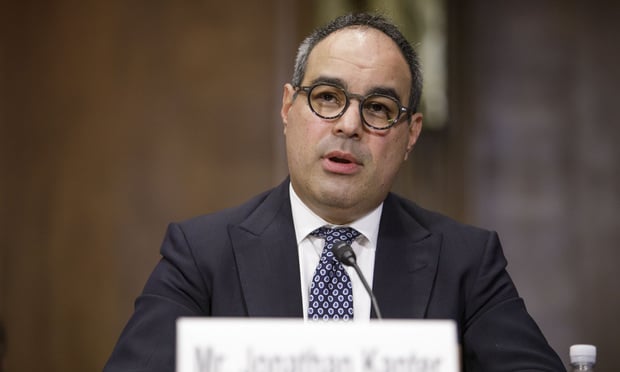 UnderSanders’s plan, the family who buys insurance on their own couldpay $20,000 in additional taxes but come out ahead. If they hadinsurance provided through their jobs, that’s a $5,000 net loss.(Photo: Shutterstock)
UnderSanders’s plan, the family who buys insurance on their own couldpay $20,000 in additional taxes but come out ahead. If they hadinsurance provided through their jobs, that’s a $5,000 net loss.(Photo: Shutterstock)
Senator Bernie Sanders says most people in America will have topay more in taxes to pay for his Medicare for All plan. But heinsists that’s a good deal — and will save people money overall bylowering health costs.
|For many Americans, though, that would not be true. Householdsthat spend a lot on health care already would be most likely to seethe benefit. But for many, higher taxes would exceed anysavings.
|Sanders, a top contender for the 2020 Democratic presidentialnomination, says the savings would come from eliminating insurancepremiums, co-pays and out-of-pocket expenses, he said in aninterview with National Public Radio.
|Related: Medicare for All: Where the 2020 presidentialcandidates stand
|Under his Medicare For All plan, Sanders says Americanscould erase $20,000 of annual private health care expenses for$10,000 in additional taxes.
|“Is that a good deal? I think that’s a pretty good deal,”Sanders said.
|Yet the 181 million taxpayers with employer-sponsored coveragecould miss out on the benefits of the Sanders plan, and even thosereceiving Medicaid could pay more, according to health-care policyexperts on both sides of the political spectrum.
|Medicare For All is a central piece of Sanders’s argument toexpand access to health care and he made his pitch during the firstDemocratic presidential debates last week in Miami.
|That $10,000 per capita number in new taxes is an estimate ofthe more than $30 trillion cost for Medicare-for-All over a decadespread across the 330 million people living in the U.S. And it’sunlikely that $10,000 cost would be spread evenly, said CynthiaCox, a vice president at the Kaiser Family Foundation. Corporationsand the wealthy would pay more than lower-income people, shesaid.
|A family of four with two incomes that total $100,000 who buysinsurance on their own and has at least one member in poor healthspends about $30,400 on health costs annually, according toestimates from the Kaiser Family Foundation. An identical familythat has employer-sponsored health care spends $15,000annually.
|Under Sanders’s plan, the family who buys insurance on their owncould pay $20,000 in additional taxes but come out ahead. If theyhad insurance provided through their jobs, that’s a $5,000 netloss.
|Sanders’s Senate office did not immediately respond to a requestfor comment. He has introduced a Medicare-for-All bill in Congressthat has also been embraced by Senator Elizabeth Warren, one of hisrivals.
|Sanders has proposed a wealth tax, a bank levy and premiums paidby employers and employees. But that only raises about half of whatis needed, meaning that payroll taxes and income tax increaseswould necessarily have to be part of the plan.
|“There are likely to be a lot more losers than winners, ” BrianRiedl, a senior fellow at the right-leaning Manhattan Institute.“It’s hard to do the tax shift without making most familieslosers.”
|Large families with lots of children and older, sicker peoplewith large out-of-pocket costs are likely to fare well under aMedicare-for-All plan, said Marc Goldwein, a senior vice presidentat the Committee for a Responsible Federal Budget, a thinktank.
|Many of the 181 million taxpayers with employer-sponsoredcoverage are likely to see their taxes go higher than their currenthealth care spending, because about 56% of their medical costs arecovered by their company, according to the Milliman Medical Index,which tracks annual health care spending.
|For example, a person making $50,000 with employer-sponsoredcoverage spends about $5,250 annually on health care, meaning thatunder Sanders’s plan, her or his taxes would be nearly double theperson’s current health care costs. If that person bought her orhis own insurance, it would cost about $10,000, equalizing the$10,000 tax increase.
|Those on Medicaid, the government-sponsored insurance programfor the poor, are likely to see their tax burdens rise far beyondtheir current health spending, Riedl said. A family of four earning$30,000 spends about $1,200 annually on health costs, according tothe Kaiser Family Foundation estimates.
|Sanders’ plan also assumes that health providers will bereimbursed at Medicare rates, about 40% below what they receivefrom private insurers. Health care experts question whether a cutthis large is feasible, meaning that the cost for Medicare for Allcould be even higher.
|“The overarching question is whether it could reduce spending bypaying doctors and hospitals less,” Cox said.
|Sanders was defensive during last week’s debate when asked ifthe middle class would pay higher taxes to fund Medicare-for-All.“Yes, they will pay more in taxes, but less in health care for whatthey get,’’ he replied.
|But higher taxes, even for more services, isn’t an easy sellpolitically. Sixty percent of people oppose Medicare-for-All whentold that it could require more in taxes, according to KaiserFamily Foundation polling. But that flips — with about 71% ofrespondents in favor — when people are told that it would guaranteehealth insurance.
|“Of course some people are going to pay more in taxes,” Sanderstold NPR. “Health care costs money. Of course it does. No one saysit is free.”
|The details on the cost, however, have continued to be elusiveas Democrats seek to build political momentum behind the idea.
|“Medicare-for-All, if it’s paid for responsibly, will shiftmoney around. As a society we might pay a little more or a littleless,” Goldwein said. “The question is how to spend it and whosepocket it comes from.”
|Read more:
- Nonprofits look for health care reform, but maybenot Medicare for All
- CBO: Medicare for All a ‘majorundertaking’
- One employer makes a case for Medicare forAll
Copyright 2019 Bloomberg. All rightsreserved. This material may not be published, broadcast, rewritten,or redistributed.
Complete your profile to continue reading and get FREE access to BenefitsPRO, part of your ALM digital membership.
Your access to unlimited BenefitsPRO content isn’t changing.
Once you are an ALM digital member, you’ll receive:
- Critical BenefitsPRO information including cutting edge post-reform success strategies, access to educational webcasts and videos, resources from industry leaders, and informative Newsletters.
- Exclusive discounts on ALM, BenefitsPRO magazine and BenefitsPRO.com events
- Access to other award-winning ALM websites including ThinkAdvisor.com and Law.com
Already have an account? Sign In
© 2024 ALM Global, LLC, All Rights Reserved. Request academic re-use from www.copyright.com. All other uses, submit a request to [email protected]. For more information visit Asset & Logo Licensing.








